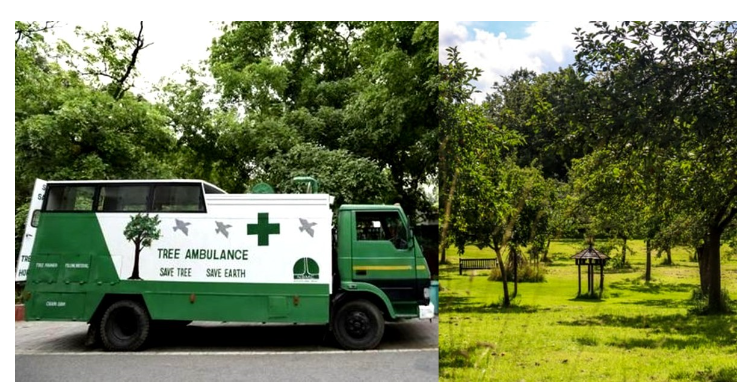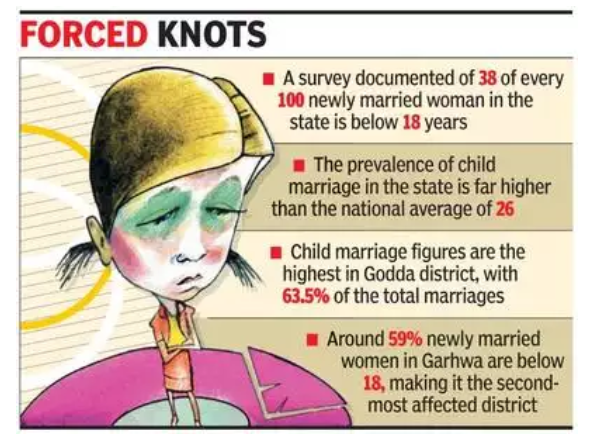Tuesday, 2nd January 2024
India’s Lithium Deal with Argentina
In News: India is reportedly in the final stages of negotiations to secure a substantial deal for five lithium blocks in Argentina, signaling a potential significant development.
Understanding Lithium
- Lithium, denoted by the symbol Li and atomic number 3, represents a distinctive chemical element.
- Possessing a soft, silvery-white composition as an alkali metal, its unique properties include being both lightweight and soft enough to be cut with a kitchen knife.
- Additionally, its low density enables it to float on water.
Applications of Lithium
- The primary utility of lithium lies in rechargeable batteries, extensively utilized in mobile phones, laptops, digital cameras, and electric vehicles (EVs).
- Often dubbed as "white gold" for EVs, lithium metal is also alloyed with aluminum and magnesium to enhance strength and reduce weight.
- Notably, aluminum-lithium alloys find applications in aircraft, bicycle frames, and high-speed trains.
- Despite having no known biological role and being toxic in larger doses, lithium plays a crucial role in modern technology.
Natural Occurrence of Lithium
- Constituting a mere 0.0007 per cent of the Earth's crust, lithium is primarily found locked up in minerals and salts.
- Chile leads with 9.3 million tonnes of known lithium reserves, followed by Australia with 6.2 million tonnes.
- Recent discoveries in the Salal-Haimana area of the Reasi district in Jammu and Kashmir have elevated India to the position of the third-largest lithium resource globally.
- Argentina and China follow India with 2.7 million tonnes and 2 million tonnes, respectively.
- Australia currently dominates global lithium production, contributing 52% to the world's total.
Prospects in Lithium Production
The increasing demand for lithium, driven by the rising production of batteries and EVs, is projected to reach 1.5 million tonnes of lithium carbonate equivalent (LCE) by 2025 and over 3 million tonnes by 2030. Meeting these demands necessitates tripling production by 2025 and nearly sextupling it by 2030.
Strategic Endeavors in Argentina
- Over the past year, India has intensified its search for critical minerals, especially lithium, as it plays a pivotal role in India's transition to green energy and a reduction in carbon footprints.
- Argentina, with its vast lithium deposits and low production costs, emerges as an ideal supplier to meet this surging demand.
- As of September 2023, Argentina boasts two active lithium mines, with 14 additional lithium projects either under construction or in the advanced exploration stage.
- Argentina is poised to become a leading global lithium producer once these projects become operational.
- The KABIL board's approval of the 'Draft Exploration and Development Agreement' and the subsequent clearance for opening a Branch Office in Catamarca, Argentina, signify India's strategic moves in securing a significant position in the global lithium market.
Source: BL
Red Sea and Panama Canal
In News: Global trade faces heightened concerns due to recent attacks on Red Sea vessels and ongoing drought issues in the Panama Canal, raising the risk of significant disruptions.
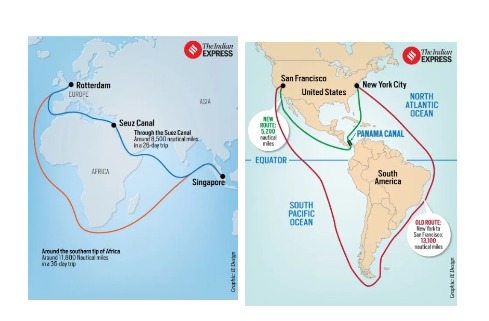
Key Issues in the Red Sea and Panama Canal
- Red Sea
- Issue
- A drone attack targeted the chemical tanker MV Chem Pluto around 200 nautical miles off the Gujarat coast.
- The vessel, flagged in Liberia and operated by a Dutch company, was transporting crude from Al Jubail, Saudi Arabia, to New Mangalore, India.
- Alleged Involved Entity
- Houthi rebels from Yemen are suspected of carrying out the attack, citing protests against Israel’s actions in Gaza.
- These rebels are also embroiled in a prolonged civil conflict with Yemen's government.
- Impact on India
- Disruptions in this vital trade route raise concerns for Indian oil importers and exporters of key commodities like basmati and tea.
- Rerouting through the Cape of Good Hope could potentially increase Indian agricultural product prices by 10-20%.
- Issue
- Panama Canal
- Issue
- Drought conditions have led to a more than 50% decrease in shipping through the 51-mile stretch of the Panama Canal.
- The El Niño climate pattern, causing warmer-than-usual water in the central and eastern tropical Pacific Ocean, contributes to Panama's drought.
- Impact
- Reduced water levels force vessels traveling from Asia to the US to choose the Suez Canal, adding six extra days compared to the Panama Canal route.
- Both the Bab-el-Mandeb Strait leading to the Suez Canal and the 100-year-old Panama Canal are critical global trade routes.
- Issue
Significance of Maritime Transport in Global Trade
- Unrivaled Volume and Value Carrier
- According to the United Nations Conference on Trade and Development, maritime transport accounts for a significant 80% of global trade by volume and over 70% by value, surpassing other transportation modes.
- Environmental Considerations
- Despite contributing around 3% of global greenhouse gas emissions, shipping is more fuel-efficient and emits less per ton of cargo transported compared to modes like air freight.
- Energy Transportation
- Sea transport plays a crucial role in transporting the majority of the world's energy resources, such as oil and natural gas, from production to consumption areas.
Measures to Reduce India's Vulnerability
- Joint Maritime Security Initiative
- Propose a collaborative security framework involving key Red Sea stakeholders (Egypt, Saudi Arabia, UAE, Yemen) to enhance intelligence sharing, coordinated patrols, and joint exercises.
- Deploy Advanced Surveillance Systems
- Enhance early threat detection and response capabilities by installing integrated radar and drone surveillance systems along India's western coastline.
- Negotiate Preferential Access
- Engage with Panama Canal authorities to explore potential preferential passage for Indian vessels or toll discounts for specific routes.
|
UPSC Previous Year Questions Prelims (2019) Q1. Consider the following pairs: Sea Bordering Country
Which of the pairs given above are correctly matched? (a) 1, 2 and 4 only Ans: (b) |
Source: IE
Scheme of Special Assistance to States for Capital Investment
In News: Over the past four years, Uttar Pradesh (UP) has received the highest share of the Centre's Rs 1,67,518.6-crore special assistance loan under the Scheme for Special Assistance to States for capital expenditure/investment.
Trends in Capital Expenditure According to the Ministry of Finance
- States' Performance
- In the last four years, Uttar Pradesh (UP) and Bihar have emerged as the top recipients of allocations under the Scheme for Special Assistance to States for Capital Expenditure, meeting the required criteria.
- Distribution Across States
- States like Uttarakhand, Haryana, Kerala, and Punjab have received approximately 1-2% of the total released amount under the Scheme.
- On the other hand, Andhra Pradesh, Kerala, Manipur, and Punjab did not receive any allocation in 2023-24 due to non-compliance with eligibility criteria.
Understanding the Special Assistance Scheme for Capital Investment
- Scheme Overview
- The Scheme for Special Assistance to States for Capital Expenditure, initiated in FY 2020-21 amid the Covid-19 Pandemic, has evolved into the 'Scheme for Special Assistance to States for Capital Investment 2023-24' with a substantial allocation of Rs 1.3 lakh crore.
- Key Parts of the Scheme
- The scheme comprises eight parts, with Part-I receiving the largest allocation of Rs. 1 lakh crore, distributed among states based on their share of central taxes and duties per the 15th Finance Commission's award.
- Diverse Objectives
- The scheme's objectives include stimulating demand and job creation, accelerating projects in critical sectors like Jal Jeevan Mission and Pradhan Mantri Gram Sadak Yojana, promoting urban reforms, and supporting cultural diversity and local products through Unity Mall projects.
Capital Expenditure in India
- Definition of Capex
- Capital Expenditure (Capex) refers to government funds allocated for acquiring, constructing, or improving physical assets, contributing to economic growth.
- The annual budget, presented by the finance minister, allocates these funds.
- Budgetary Growth
- Over the years, the capital investment outlay has seen a three-year consecutive increase, reaching Rs 10 lakh crore, equivalent to 3.3% of the GDP, marking a substantial growth of 33% (Union Budget 2023-24).
- Effective Capital Expenditure Concept
- To provide a comprehensive view of public investment, the concept of 'effective capital expenditure' has been introduced.
- This encompasses the sum of capital expenditure and grants for creating capital assets, budgeted at Rs 13.7 lakh crore or 4.5% of GDP (Union Budget 2023-24).
|
UPSC Previous Year Questions Prelims (2016) Q. Which of the following is/are included in the capital budget of the Government of India?
Select the correct answer using the code given below: (a) 1 only Ans: (d) |
Source: BL
Ayushman Bharat-Pradhan Mantri Jan Arogya Yojana
In News: The Ministry of Health & Family Welfare has recently issued statistics pertaining to the Ayushman Bharat Pradhan Mantri — Jan Arogya Yojana (AB PM-JAY).
Key Highlights of AB PM-JAY Statistics
- Ayushman Cards
- Women constitute around 49% of the total Ayushman cards and approximately 48% of authorized hospital admissions.
- As of December 2023, around 28.45 Crore Ayushman Cards have been generated, with approximately 9.38 crore cards created in 2023.
- Health Coverage
- The scheme covers 55 crore individuals from 12 crore families, and several states and union territories have expanded the beneficiary base at their own cost.
- Hospital Admissions
- A total of 6.11 crore hospital admissions, totaling Rs 78,188 crores, were authorized, with 1.7 crore hospital admissions worth over Rs 25,000 crores authorized in 2023 (Jan-Dec 2023).
About Ayushman Bharat-PMJAY
- Overview
- PM-JAY stands as the world’s largest government-financed health insurance scheme.
- Launched in 2018, it provides a sum insured of Rs.5 lakh per family for secondary and tertiary care, covering surgeries, medical treatments, day care, medicines, and diagnostics.
- Beneficiaries
- An entitlement-based scheme targeting beneficiaries identified by the latest Socio-Economic Caste Census (SECC) data.
- The National Health Authority (NHA) allows flexibility for states/UTs to use non-SECC beneficiary family databases with similar socio-economic profiles.
- Funding
- The scheme's funding is shared, with a 60:40 ratio for states/UTs with their own legislature, 90:10 in Northeast states and Jammu and Kashmir, Himachal Pradesh, and Uttarakhand, and 100% central funding for UTs without a legislature.
- Nodal Agency
- The National Health Authority (NHA), established as an autonomous entity under the Society Registration Act, 1860, ensures effective PM-JAY implementation in collaboration with state governments.
- The State Health Agency (SHA) serves as the apex body of the State Government responsible for AB PM-JAY implementation in the state.
Source: TH
SHRESHTA
In News: The Ministry of Social Justice & Empowerment has recently emphasized the Scheme for Residential Education for Students in High Schools in Targeted Areas (SHRESHTA).
Key Highlights of SHRESHTA
- About SHRESHTA
- SHRESHTA aims to address the educational service gap in areas dominated by Scheduled Castes (SCs) by providing high-quality education, socio-economic upliftment, and overall development for SC students.
- Admission is offered in Class 9 and Class 11 of CBSE/State-affiliated private schools.
- Eligibility Criteria
- Eligible students are those from SCs studying in class 8th and 10th in the current academic year.
- Students from the SC community with an annual income of up to Rs 2.5 lakh are eligible.
- Operating Procedure
- Mode 1: SHRESHTA Schools
- Selection Process
- Meritorious SC students are annually chosen through the National Entrance Test for SHRESHTA (NETS) conducted by the National Testing Agency (NTA).
- Selection Process
- Financial Support
- The Department covers total fees, including school and hostel fees, ranging from Rs. 1,00,000 to Rs. 1,35,000 from class 9th to 12th.
- Bridge Course
- A supplementary course is provided to enhance students' adaptability to the school environment.
- Mode 2: NGO/VO Operated Schools/Hostels
- Schools/Hostels operated by VOs/NGOs with classes up to 12th grade receive grants for school fees and residential charges for SC students.
- Grants range from Rs. 27,000 to Rs. 55,000 per student based on the type of school.
- Monitoring Mechanism
- Regular progress monitoring by the Ministry.
- Institutions are required to disclose performance on their websites and the e-Anudaan/online portal for transparency.
- Installation of cameras in institutions providing live feeds for monitoring purposes.
- All institutions are subject to field visits by an inspection team.
- Impact
- In 2023-24 (as of December 2023), the scheme has benefited 7,543 students.
- Admissions in 2023-24 include 2,564 students admitted to 142 Private Residential Schools, with Rs. 30.55 Crore reimbursed for school fees.
- Mode 1: SHRESHTA Schools
Source: PIB
Salton Sea
In News: The U.S. Department of Energy has recently identified the largest lithium reserve globally beneath the Salton Sea in California.
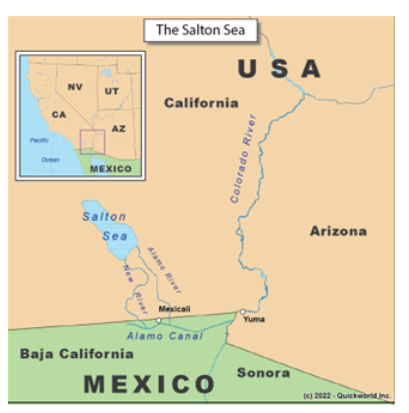
- Salton Sea Overview
- Situated in the lower Colorado Desert, southern California, USA, the Salton Sea is a shallow, saline lake nestled in a geological depression below sea level.
- Its formation dates back to 1905–06 when floodwaters from the Colorado River, due to diversion controls breaking, filled the pre-existing salt-covered sink.
- Geological Characteristics
- Originally a depression around 280 feet below sea level, subsequent deepening was halted in 1907 with the construction of protective levees.
- Presently, the Salton Sea is 228 feet below sea level, covering an expansive 970 square km with 130 miles of shoreline.
- It boasts an average depth of 29.9 feet, reaching 51 feet at its deepest point, and exhibits salinity far surpassing that of seawater.
- Ecological Significance
- Beyond its geological features, the Salton Sea holds ecological importance.
- It serves as a vital resting point for migratory waterfowl, acting as critical habitat for birds en route to Mexico and Central America.
Key Facts about Lithium
- Metal Properties
- Lithium, a soft, silvery-white metal belonging to the alkali metals group (group 1), possesses the lowest density among all metals.
- It stands as the lightest of the solid elements, displaying a body-centered cubic crystal structure. Notably, it reacts vigorously with water.
- Occurrence
- In its natural state, lithium doesn't exist as a metal but is found in small amounts in igneous rocks.
- It is prevalent in brine deposits and mineral springs, with a concentration of 0.1 parts per million in seawater.
- Versatile Uses
- Lithium plays a pivotal role in rechargeable batteries for various electronic devices, including mobile phones, laptops, digital cameras, and electric vehicles.
- Additionally, it finds application in non-rechargeable batteries for items like heart pacemakers, toys, and clocks.
- Moreover, lithium metal contributes to alloys with aluminum and magnesium, enhancing their strength and reducing weight.
Source: OP
Sukanya Samriddhi Yojana
In News: The government has recently increased the interest rates on the Sukanya Samriddhi Yojana (SSY) scheme by 20 basis points, raising it from the current 8 percent to 8.2 percent.
About Sukanya Samriddhi Yojana
- Introduction
- The Sukanya Samriddhi Yojana (SSY) is a savings scheme launched in 2015 as part of the Government of India's ''Beti Bachao Beti Padhao'' campaign, with a primary objective to promote the education of girl children.
- Purpose and Design
- SSY is a specialized small-deposit scheme crafted exclusively for the financial well-being of the girl child.
- It empowers guardians to open a savings account for their girl child through authorized commercial banks or India Post branches.
- Eligibility Criteria
- The girl must be an Indian resident.
- The account can be initiated by the parent or legal guardian when the girl child is below the age of 10.
- Only one SSY account is permitted per girl child, and a family is limited to opening a maximum of two accounts.
- NRIs are ineligible to open SSY accounts.
- The girl child takes control of the account upon reaching 18 years of age.
- Distinctive Features
- The minimum and maximum deposits allowed in a financial year are Rs.250 and Rs.1.5 lakh, respectively, in multiples of 100.
- Deposits should be made for a 15-year period, with the scheme maturing after 21 years.
- No interest is payable after the account completes twenty-one years from the opening date.
- Partial Withdrawal Provision
- Withdrawal of up to 50% of the account balance at the end of the preceding financial year is permitted for the girl child's education.
- Withdrawal is allowed after the account holder attains 18 years or completes the 10th standard, whichever is earlier.
- Tax Benefits
- To incentivize SSY investments, the scheme offers the following tax benefits:
- Section 80C Deductions
- Investments in SSY qualify for deductions under Section 80C of the Income Tax Act, up to a maximum limit of Rs. 1.5 lakh.
- Tax-Exempt Interest
- The annual compounded interest on the Sukanya Samriddhi Yojana account is exempt from tax under Section 10 of the Income Tax Act.
- Tax-Free Proceeds
- Maturity or withdrawal proceeds from the SSY account are also exempt from income tax.
- Section 80C Deductions
- To incentivize SSY investments, the scheme offers the following tax benefits:
Source: LM
Guyana-Venezuela Conflict
In News: Amid escalating tensions stemming from a border dispute between the former British colony and Venezuela, a British warship recently arrived in Guyana.
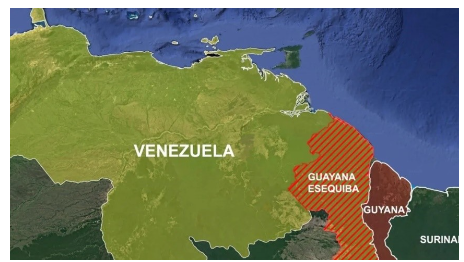
Guyana-Venezuela Conflict Overview
- Historical Dispute
- The territorial disagreement between Guyana and Venezuela traces its roots back to the colonial era when British and Spanish powers disputed the land boundary in South America.
- In the 1840s, unilateral British surveying encroached on Venezuelan claims, sparking a conflict that has persisted.
- Arbitration and Bilateral Agreements
- In an attempt to resolve the dispute, arbitration took place in 1899, followed by bilateral agreements in 1905 for demarcation.
- However, despite these efforts, the conflict remains unresolved.
- The current de facto boundary, aligned with the British line and accepted by Guyana, is contested by Venezuela.
- Historic Venezuelan Claim
- Venezuela maintains a historic claim to all territory west of the Essequibo River, challenging the validity of the Arbitral Award of 1899.
- The Essequibo region in Guyana is at the center of the dispute, encompassing approximately 142,795 square kilometers.
- Disputed Essequibo River Region
- The contested area extends along the Essequibo River for 1,034 kilometers, reaching Brazilian territory.
- The conflict gains significance due to the discovery of hydrocarbon resources in the disputed maritime space off the Guyanese coast.
- Current Legal Proceedings
- In 2018, Guyana escalated the matter by submitting the dispute to the International Court of Justice (ICJ).
- Despite Venezuela's withdrawal from the case, legal proceedings are ongoing at the ICJ, shaping the current status of the Guyana-Venezuela conflict.
Source: ABC News
Srimukhalingam Temple
In News: The Archaeological Survey of India has committed to submitting a communication to UNESCO regarding the inclusion of the Srimukhalingam temple in Andhra Pradesh in the list of world heritage structures.

Srimukhalingam Temple Overview
- Location
- Situated in the state of Andhra Pradesh, the Srimukhalingam Temple stands as a testament to the Kalinga architectural style.
- Architectural Style and Deity
- Built in the 9th century CE by the Eastern Ganga Dynasty, this temple is dedicated to Lord Srimukha Lingeswara, a distinct form of Shiva.
- The unique feature of the Shivalinga at this temple is the mukha, a facial representation of Lord Shiva.
- Geographical Setting
- Nestled on the banks of the Vamsadhara River, the temple's location enhances its spiritual significance.
- The intricate sculptures within the temple showcase the artistic brilliance of the period.
- Historical Significance
- Constructed by Kamarnava II, a ruler from the Eastern Ganga family line, the Srimukhalingam Temple houses three ancient temples in one location.
- The Trinity of Madhukeswara, Someswara, and Bheemeswara Temples attests to the architectural prowess of the Kalinga Kings.
- Spiritual Beliefs
- Believers hold that a visit to this sacred site and a ritual dip in the river can liberate individuals from the cycle of rebirth.
- UNESCO World Heritage Consideration
- The Archaeological Survey of India has expressed its intention to communicate with UNESCO for the potential inclusion of the Srimukhalingam Temple in the prestigious list of UNESCO World Heritage Sites.
Key Points about UNESCO World Heritage Sites
- A World Heritage Site (WHS) enjoys legal protection under the UNESCO World Heritage Convention, established in 1972.
- These sites, designated by UNESCO, hold cultural, historical, scientific, or other forms of significance.
- Classified into cultural, natural, and mixed heritage, WHSs are considered globally outstanding and of significant value to humanity.
- Selection criteria include uniqueness, geographical and historical identification, and special cultural or physical significance.
- Examples of WHSs encompass ancient ruins, historical structures, cities, deserts, forests, monuments, mountains, or wilderness areas.
- UNESCO's World Heritage Program, administered by the World Heritage Committee, manages and maintains the list of these protected zones.
Source: TH
Bhil Tribe
In News: In a recent discovery, a stone deity revered by the Bhils in the Bagh region of Madhya Pradesh was confirmed to be a fossilized dinosaur egg.
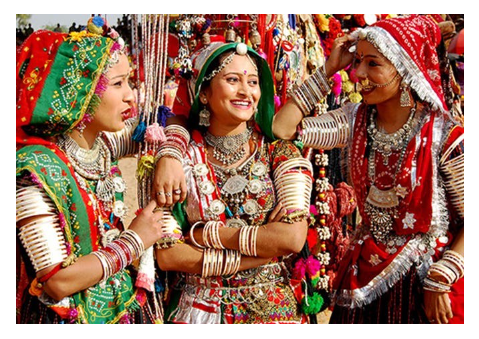
About the Bhil Tribe
- Historical Significance
- The Bhils stand as one of India's ancient tribes, with a rich cultural heritage.
- Etymology
- The term 'Bhil' originates from the Dravidian language, specifically from the words villu or billu, translating to 'Bow.'
- This tribal community is recognized as a Dravidian racial group in Western India, belonging to the Austroloid tribal cluster.
- Group Division
- Primarily, Bhils are categorized into two main groups: the central and eastern Rajput Bhils.
- The central Bhils inhabit the mountainous regions spanning across Madhya Pradesh, Maharashtra, Gujarat, and Rajasthan.
- Additionally, Bhil communities are found in the northeastern areas of Tripura.
- Language and Communication
- Bhils communicate through Bhili, an Indo-Aryan language that serves as a linguistic thread weaving their cultural identity.
- Religious Practices
- Religious practices among the Bhils vary across regions. The majority engage in the worship of local deities such as Khandoba, Kanhoba, Bahiroba, and Sitalmata.
- A subset reveres the Tiger God, known as 'vaghdev.' The guidance of Badvas, hereditary sorcerers, is sought on various occasions.
- Festivals and Celebrations
- One of the pivotal celebrations in Bhil culture is the Baneshwar fair.
- This festival, dedicated to Baneshwar Mahadev (Lord Shiva), unfolds during Shivratri (in January or February).
- It serves as a vibrant occasion for cultural expression and community gathering among the Bhils.
Source: IE
Opportunities and Challenges in the Banking Sector
In News: A recent article highlights concerns regarding State finances, an overheated stock market, and interconnected lending, despite the undeniable good health of banks.
Evolution of Indian Banks Over Time
- First Generation Banking
- Before Independence, the Swadeshi Movement led to the establishment of numerous local banks, facing challenges like fraud and interconnected lending.
- Second Generation Banking (1947-1967)
- Post-Independence, banks consolidated resources towards business families, neglecting credit flow to agriculture.
- Third Generation Banking (1967-1991)
- Nationalization in two phases severed industry-bank links, emphasizing mass banking and rural expansion.
- Fourth Generation Banking (1991-2014)
- Reforms allowed new licenses, introducing competition and technology for enhanced efficiency.
- Current Model (2014 Onward)
- The JAM trinity and licenses to Payments Banks and SFBs focus on financial inclusion.
Current Status of Indian Banking
- Background
- Bad loans posed challenges, leading to the 4R strategy—Recognize, Resolution, Recapitalization, and Reforms.
- Profitability and Asset Quality Improvement
- Gross NPA ratio dropped to 4.41%, with PSBs surpassing Rs 1 lakh crore in profit.
- Policy Reforms and Financial Discipline
- Reforms focused on credit discipline, responsible lending, governance, and technology adoption.
- Robust Financial Indicators
- Strong liquidity levels and robust capital-to-risk-weighted assets ratio demonstrate financial health.
Obstacles for the Indian Banking Sector
- Infrastructure and Capital Investments Risk
- Bank lending for infrastructure projects linked to State finances poses default risks.
- Stock Market and Retail Exposure Risk
- An overheated stock market poses risks to retail exposures.
- Interconnected Lending and Governance Challenges
- Default contagion risks due to interconnected lending require focused risk monitoring.
- SME Challenges in a Re-Globalizing World
- Geopolitical shifts may impact SMEs, requiring banks to assess potential risks.
- Changing Liabilities Landscape
- Digitization impacts retail deposits, requiring caution and prudence from banks.
Fortifying the Indian Banking Sector
- Building Big Banks
- Consolidating PSBs, establishing entities like DFI and Bad Bank for stability.
- Requirement for Differentiated Banks
- Creating specialized banks for retail, agriculture, and MSMEs.
- Blockchain Banking
- Leveraging technology, particularly Blockchain, for streamlined oversight.
- Addressing Moral Hazard
- Emphasizing the need for increased individual deposit insurance and efficient resolution mechanisms.
- ESG Integration
- Considering listing on reputable stock exchanges and embracing the ESG framework.
- Enhancing Banking Institutions
- Refining regulatory measures for diversified loan portfolios and sector-specific regulators.
- Facilitating Corporate Bond Market Growth
- Promoting the growth of the corporate bond market for a resilient economy.
- Enhancing Risk Management Models
- Developing internal risk models tailored to individual States for effective risk assessment.
- Addressing Changes in Liabilities
- Recognizing the changing nature of liabilities influenced by digitization and evolving consumption trends.
Conclusion
Celebrating success while adopting a proactive stance to navigate complexities and uncertainties in the banking sector.
|
UPSC Previous Year Questions Prelims (2022) Q. With reference to the Banks Board Bureau (BBB), which of the following statements are correct?
Select the correct answer using the code given below: (a) 1 and 2 only Ans: B Prelims (2018) Q2. Consider the following events:
Which of the following is the correct chronological sequence of the above events? (a) 4 – 1 – 2 – 3 Ans: B Mains (2016) Q. Pradhan Mantri Jan Dhan Yojana (PMJDY) is necessary for bringing unbanked to the institutional finance fold. Do you agree with this for the financial inclusion of the poorer section of the Indian society? Give arguments to justify your opinion. |
Source: BL
Share the article
Edukemy’s Current Affairs Quiz is published with multiple choice questions for UPSC exams
MCQ
Get Latest Updates on Offers, Event dates, and free Mentorship sessions.

Get in touch with our Expert Academic Counsellors 👋
FAQs
UPSC Daily Current Affairs focuses on learning current events on a daily basis. An aspirant needs to study regular and updated information about current events, news, and relevant topics that are important for UPSC aspirants. It covers national and international affairs, government policies, socio-economic issues, science and technology advancements, and more.
UPSC Daily Current Affairs provides aspirants with a concise and comprehensive overview of the latest happenings and developments across various fields. It helps aspirants stay updated with current affairs and provides them with valuable insights and analysis, which are essential for answering questions in the UPSC examinations. It enhances their knowledge, analytical skills, and ability to connect current affairs with the UPSC syllabus.
UPSC Daily Current Affairs covers a wide range of topics, including politics, economics, science and technology, environment, social issues, governance, international relations, and more. It offers news summaries, in-depth analyses, editorials, opinion pieces, and relevant study materials. It also provides practice questions and quizzes to help aspirants test their understanding of current affairs.
Edukemy's UPSC Daily Current Affairs can be accessed through:
- UPSC Daily Current Affairs can be accessed through Current Affairs tab at the top of the Main Page of Edukemy.
- Edukemy Mobile app: The Daily Current Affairs can also be access through Edukemy Mobile App.
- Social media: Follow Edukemy’s official social media accounts or pages that provide UPSC Daily Current Affairs updates, including Facebook, Twitter, or Telegram channels.

